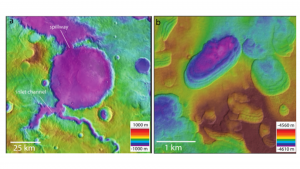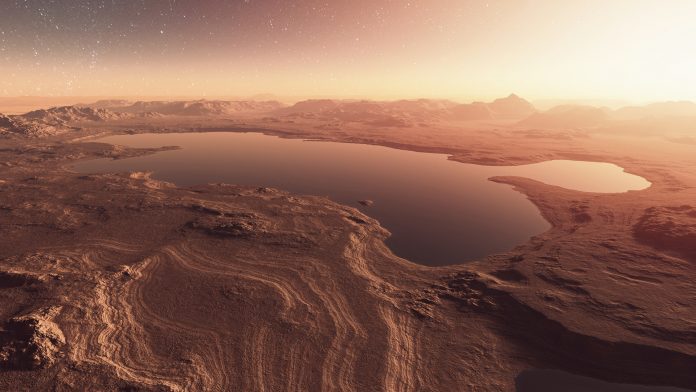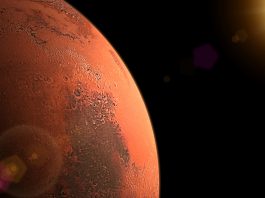A new analysis from researchers at the University of Hong Kong (HKU) suggests that the number of ancient Martian lakes is far higher than previously estimated, changing our understanding of the prevalence of water on Mars.
The team performed a meta-analysis of multiple years of satellite data that shows evidence of lakes on Mars, finding scientists may have significantly underestimated the number of Martian lakes that once existed. The findings published in Nature Astronomy may enhance our understanding of water on Mars and potential ancient life on the red planet.
The prevalence of ancient Martian lakes
Lakes are bodies of water supplemented by rainfall, snowmelt, rivers, and groundwater and are responsible for much of the life we see on Earth. Although today, Mars is a frozen desert, billions of years ago, scientists believe it was once home to ancient lakes. Large-scale water on Mars may have once supported ancient life.
Joseph Michalski, a geologist in the Department of Earth Sciences at HKU, commented: “We know of approximately 500 ancient lakes deposited on Mars, but nearly all the lakes we know about are larger than 100 km2. But on Earth, 70% of the lakes are smaller than this size, occurring in cold environments where glaciers have retreated. These small-sized lakes are difficult to identify on Mars by satellite remote sensing, but many small lakes probably did exist. It is likely that at least 70% of Martian lakes have yet to be discovered.”
Scientists monitor these small lakes on Earth to understand climate change, meaning the missing small lakes on Mars could contain vital information about the red planet’s past climates. The new research suggests that these ancient Martian lakes existed around 3,500 to 4,000 million years ago, but each may have only lasted for around 10,000 to 100,000 years. The findings also infer that Mars was predominantly cold and dry, warming episodically for short periods.

Michalski explained: “Because of the lower gravity on Mars and the pervasive, fine-grained soil, lakes on Mars would have been very murky and might not have allowed light to penetrate very deeply, which could present a challenge to photosynthetic life if it existed.”
Supporting life on Mars
Lakes are rich in water, nutrients, and energy sources that are essential for supporting microbial life, including light for photosynthesis, making lakes prominent targets for astrobiological exploration by Mars Rovers, such as NASA’s Perseverance which is currently on the planet.
However, Michalski warned: “Not all lakes are created equal. In other words, some Martian lakes would be more interesting for microbial life than others because some of the lakes were large, deep, long-lived and had a wide range of environments such as hydrothermal systems that could have been conducive to the formation of simple life.”
This means that it may be most effective to target large, ancient, environmentally diverse lakes for future exploration of water on Mars.
Dr David Baker, an ecologist at HKU School of Biological Sciences, concluded: “Earth is host to many environments that can serve as analogues to other planets. From the harsh terrain of Svalbard to the depths of Mono Lake – we can determine how to design tools for detecting life elsewhere right here at home. Most of those tools are aimed at detecting the remains and residues of microbial life.”









